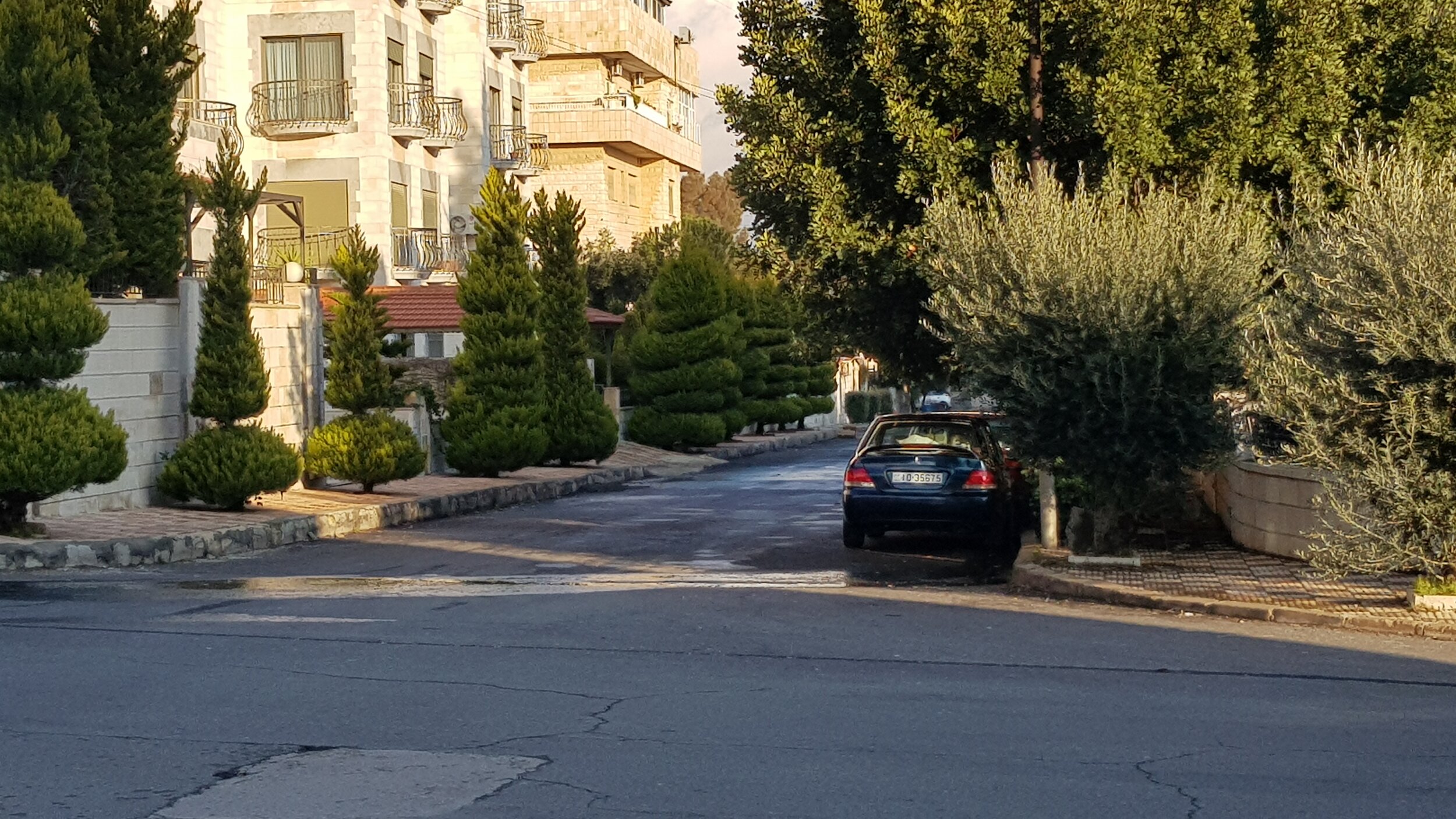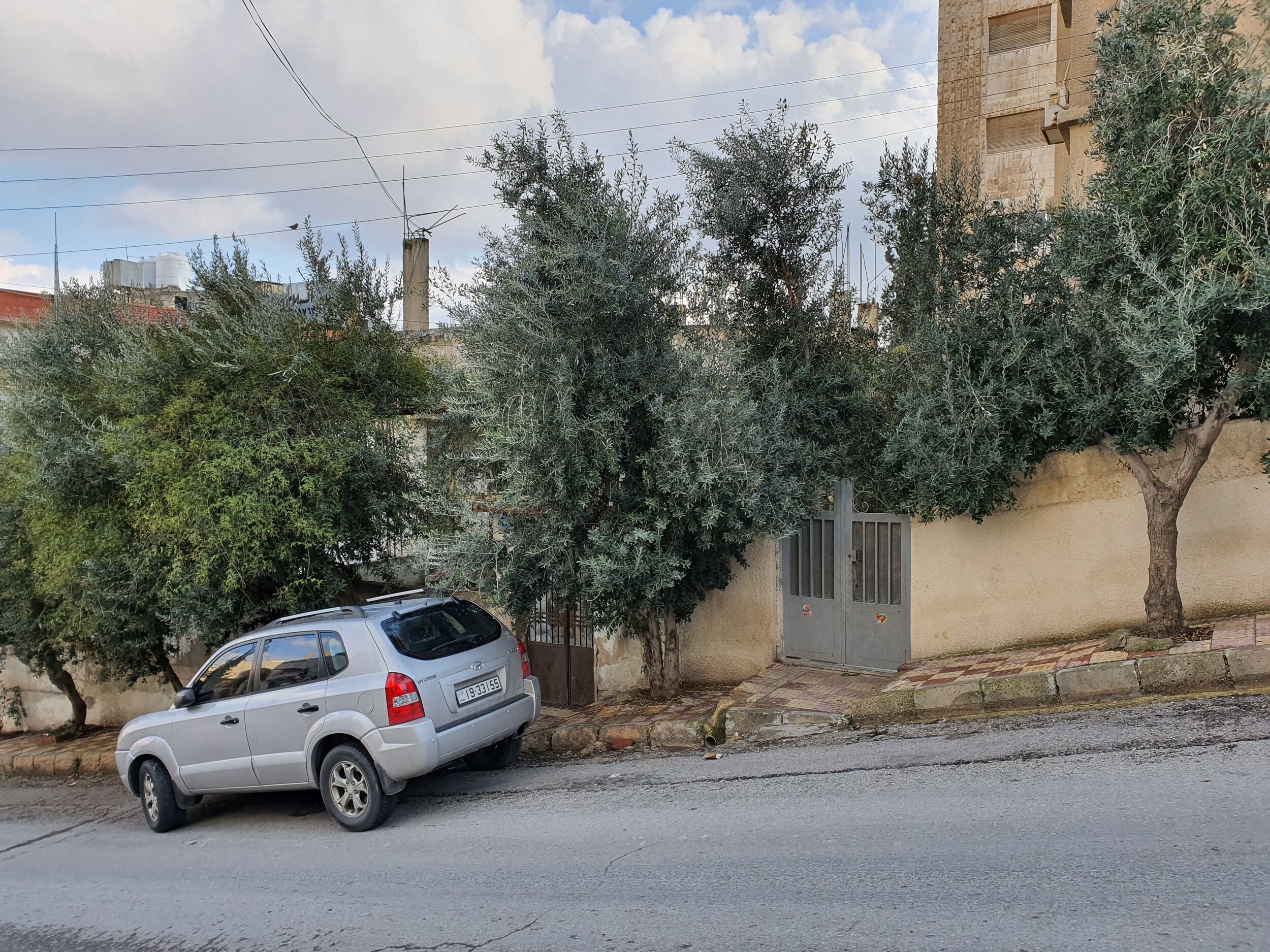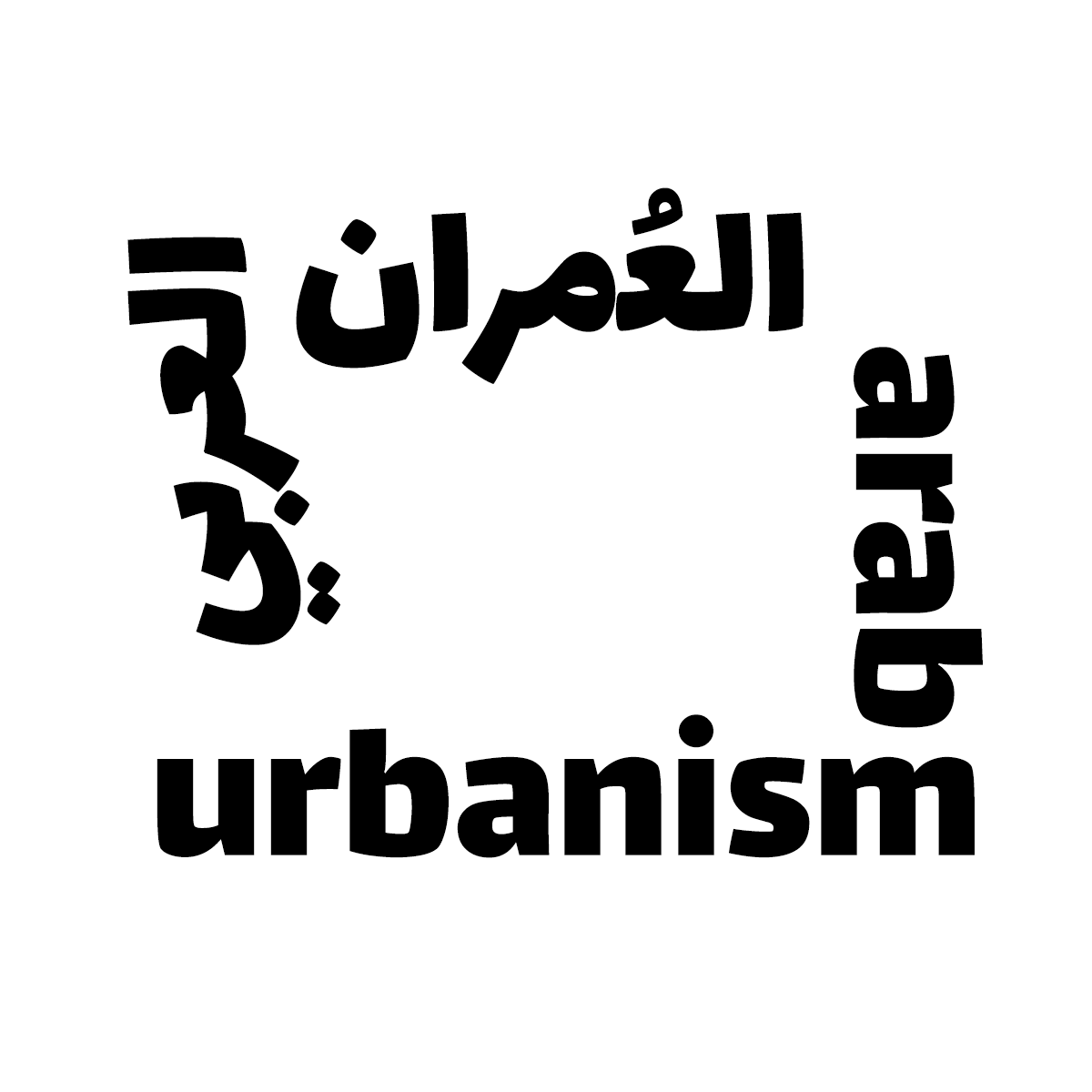The Green Buffer Pavement of Amman
Janset Shawash and Narmeen Marji
Amman, Jordan
A ubiquitous urban detail in Amman, frequently observed in residential areas, is the “green-buffer-pavement”. It consists of a narrow strip of sidewalk, situated between the road and the perimeter fence of a residential building, made completely useless for pedestrian movement by the presence of trees planted along the centre line. The trees range from sculpted thujas, elegant palms, an occasional elderly eucalyptus, to olive trees. The curbside is usually occupied by parked cars, rendering bypassing obstacles even more cumbersome. Pedestrians take to walking on the road, sharing its space with cars, children’s buggies, handicapped wheelchairs and the occasional bicycle.
Two major circumstances led to the emergence of this curious phenomenon: planning legislations, and conservative social norms. The construction and management of pavements is regulated by the “Statute of Pavements in Greater Amman Municipality for year 2016”, whereby the pavement is defined as “the part of road dedicated to the passing of pedestrians that is located between the property line and the road”. The statute also states that the owner of the land plot abutting the road is responsible for the construction of the pavement (except for commercial streets of main roads), and is expected to do this at his own expense. Further Municipality regulations detail the procedures and specifications of pavement approval for new projects; a pavement is only allowed to have trees and fixtures if it is more than 2 meters wide; while the materials, profile and tree types for the pavement need to be approved by the Municipality. A pavement which fulfills the stated requirements is deemed acceptable, and is granted a “pavement certificate”. However, abidance by this concept of “pavement-ness” is fairly new, and pre-established mindsets prevail.



Figure 5. A thriving Thuja Occidentalis sprouting from the centerline of a pavement abutting a residential building in Al-Shmeisani district in Amman.
The pre-established mindsets form another major circumstance in the production of the green-buffer-pavement. On one hand, the owner of the residential land-plot is constructing the pavement at his own expense on public land, which gives him a sense of ownership and a leeway to serve his own needs, all with minimum interference as regulations are moot and the follow-up miniscule. On the other hand, the society in Amman is still predominantly conservative, trying to accommodate the fast pace of global changes. Changes that include the shrinking of the private space due to rise of prices of housing stock, and increase of population density, all of which bring the private space of home into a direct and uncomfortable proximity to public space. Thus, land owners take the opportunity to create a green interface between the private realm of the home and the public realm of the street. The private space is enclosed with a high, visually impermeable fence, and is further protected by a narrow strip of the pavement-land. Trees provide an added layer of both visual buffering and visual interest. The pavement, is de-pavement-ed in the process, and is rendered useless as a mobility element. It silently dis-invites any potential user from approaching, while still keeping up a pleasant façade. It presents however, a form of a silent, contemporary gesture of rejection of global norms, as well as appropriation of a tiny part of public sphere to suit the private needs of a conservative society.
While this practice is normalized by the general public, the Municipality has been trying to reclaim pavements for pedestrian use through more detailed legislation and more dedicated oversight. In the meantime, the un-certified non-pavements still occupy residential neighborhoods.


